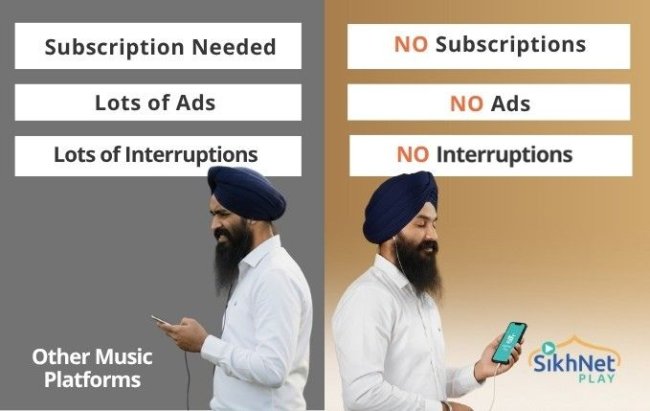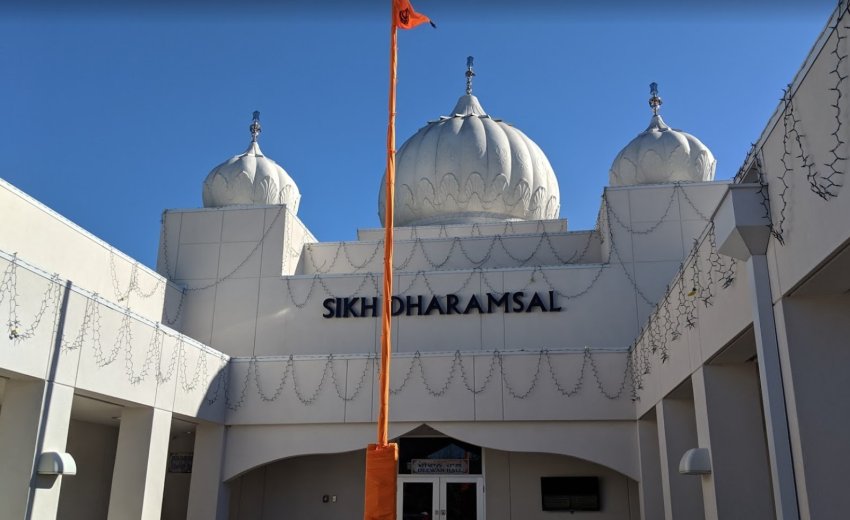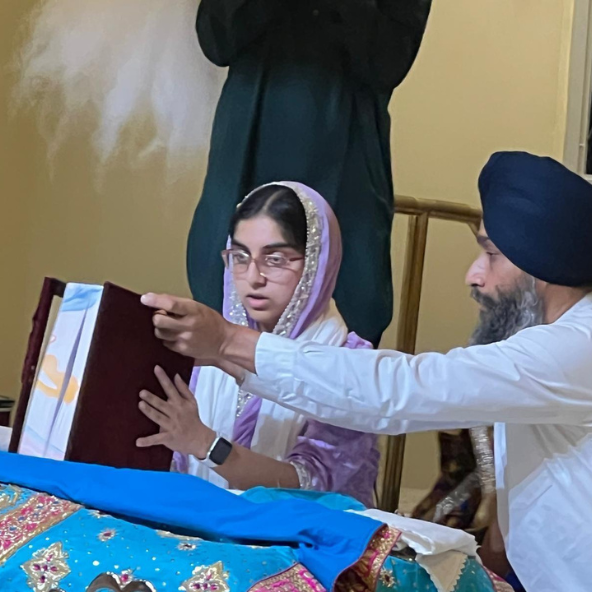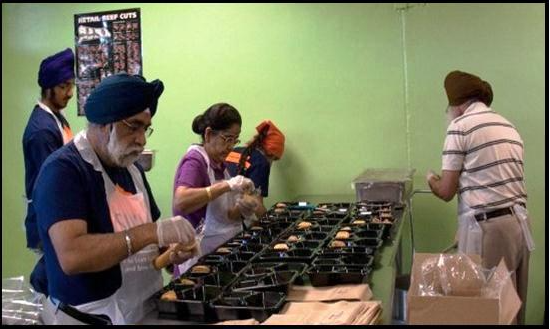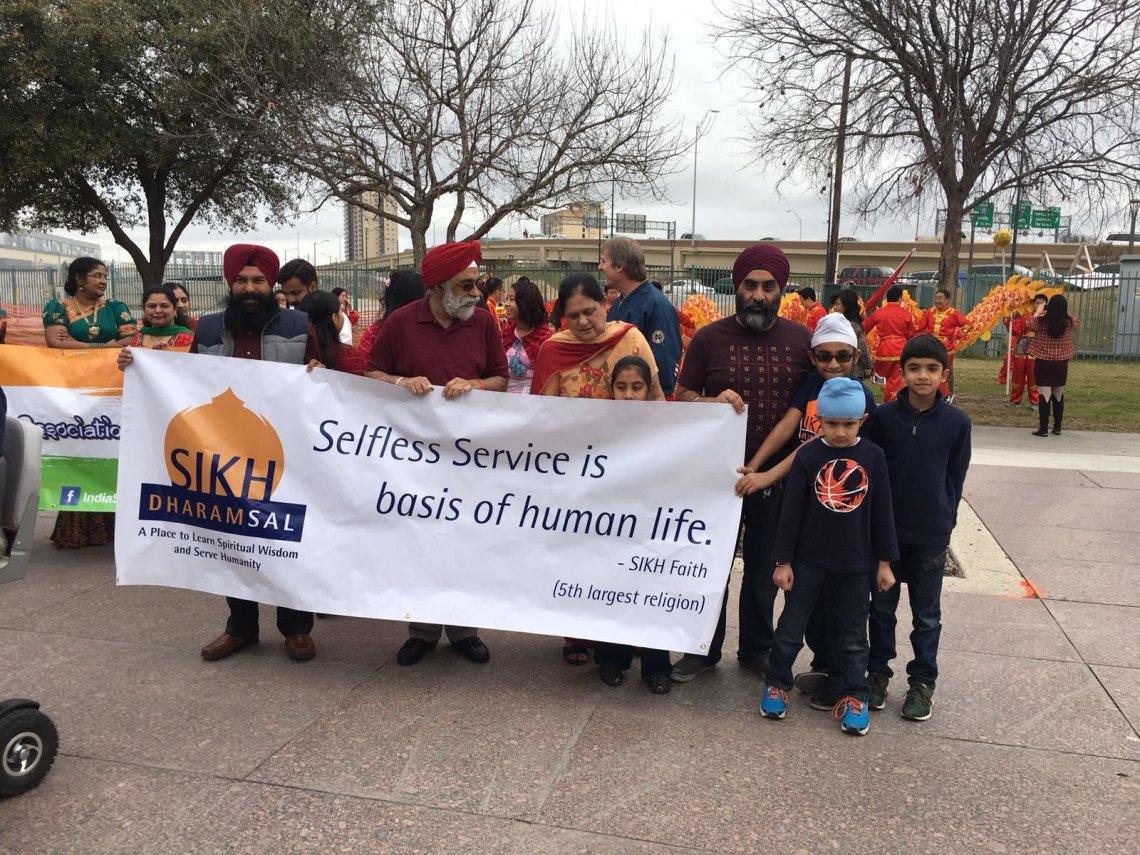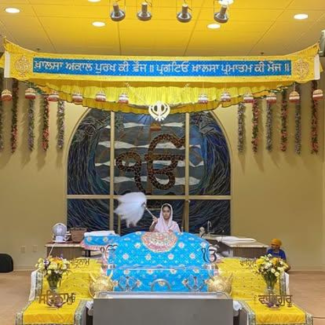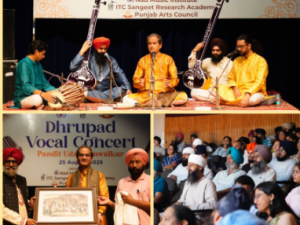Dharamsal Gurudwara San Antonio Celebrated First Decade in 2025
The name of the San Antonio Gurudwara Dharamsal is inspired by the Sikh tradition of a spiritual gathering place with a focus on practicing its concepts in everyday life. Since breaking ground in 2015, Dharamsal Gurdwara has provided an activity-based worship center that emphasizes a daily practice of devotional reading and singing to establish a personal connection with Guru Granth Sahib. Discussions, questions, and exchange of ideas are encouraged with an emphasis on youth-oriented studies and participation in all aspects of Sikhi. Visitors are welcome to participate in worship services and in communal services.
2025 Tenth Anniversary Celebrations
To commemorate their first decade, Dharamsal Gurudwara celebrated every weekend throughout August 2025 with Kirtan (singing Gurbani), Katha (speaking on the meanings of Gurbani), and Sahej Paath (a complete reading of Guru Granth Sahib). Special guests featured included:
- Hazoori Ragi, ChardiKala Jathat – Kirtan
- Head Granthi FatehGhar Sahib, Giani Harpal Singh – Katha
- Bhai Anantvir Singh Ji (LA Wale) – Kirtan
- Hazuri Ragi Gurdwara Bangla Sahib, Bhai Dawinder Singh Shant – Kirtan
- Hazoori Ragi, Arminderpal Singh & Jatha – Kirtan
Founding of Dharamsal Gurudwara
Gurinderpal Singh, better known as GP Singh, and his wife, Parvinder Kaur, with their steadfast dedication and purposeful focus, are the inspiration behind the creation of the Dharamsal Gurdwara.
Sikhnet: As someone who lives in an outlier community of Sikhs with no local Gurdwara, I am aware of how few choices others like us have involving lengthy commutes to Gurdwara Sahib, or meeting in each other’s homes periodically. A few have a dedicated space in their home where they keep Guru Granth Sahib. There has been little change in our circumstances since the 1980s. Curious as to how GP Singh and Parvinder Kaur accomplished what my community has not, I asked them several pertinent questions about their experiences. “What motivated you to take on this seva?”
GP Singh: “I felt a deep stirring in my heart when I saw our Sangat in San Antonio growing. The need for a space that reflects true Sikh values, a spiritual sanctuary and community hub — what the Sikh Dharamsal vision describes — was becoming more urgent every day. I was moved, not just by the thought of having a Gurudwara as a place of prayer, but by the conviction that it should be a place where we go back to basics, live our Sikhi in its fullness, and build for future generations. That conviction settled something in me: that doing this seva was not just an option, but something I couldn’t turn away from.
Sangat Seva Simran
The foundation of Dharamsal Gurudwara is its Sangat, the congregation. Sangat gathers to commune with the divine through the practice of Seva, voluntary selfless service, and with Simran, engaging in remembrance, reflection, contemplation, meditation, and focus on Waheguru, whether sitting with Sangat or performing Seva such as preparing Langar, a free meal served at every gurdwara.
Sikhnet: Having observed, for decades, the stages of developing gurdwaras in larger cities, from ground breaking, to preparing langar out of doors and having the fire department show up, worshipping sometimes at first in small outbuilding, house, or what later became the langar hall, the meetings, the permit process, the neighborhood’s fears, fundraising, all these various steps, I have an idea of the commitment it entails, and what an enormous effort it takes from everyone working together. “How long did it take for your dream of Sikh Dharamsal to become a reality?”
GP Singh: “It took about four years for the dream to lift off the page and become tangible. We began by seeking land — one acre at a time — gradually assembling nearly four acres in San Antonio. During those years, we found an architect who understood our purpose, selected a builder who shared our values, and worked through all the details that bring a vision like Sikh Dharamsal alive. Each step was slow, often challenging, but also filled with hope. Looking back, those years weren’t merely about logistics — they were about growing our faith, strengthening resolve, and seeing how Guru’s grace works in each moment.”
Sikhnet: “What kind of hurdles and obstacles did you face and overcome?”
GP Singh: “Like any meaningful seva, the path was not without its hurdles. Early on, we had to work carefully through the legal formation and bylaws, making sure that the foundation of Sikh Dharamsal would remain true to the basic principles of Sikhi. Even naming the Gurdwara was a journey — we went back to the roots, choosing “Sikh Dharamsal,” the same word our Gurus used for the very first centers of learning and worship. There were practical challenges too, like navigating local requirements and ensuring harmony with the neighborhood. Yet, instead of resistance, we were blessed with a letter of welcome from the homeowner association — what a beautiful gift from the local community.
Sikhya
To empower subsequent generations with a strong Sikh identity, Sikhya, a Sunday school held from 10:00 am to noon, teaches a variety of classes at different age levels. Interactive subjects and practical experience include:
- Punjabi alphabet and language
- Gurumukhi pronunciation
- Sikh history events and people
- Understanding Gurbani and singing Kirtan
- Sehaj paath devotional reading
- Sikh values and traditions, practicing Seva and Simran.
- Sikh philosophy and Sikh Rehit Maryada (SRM) Code of Conduct and Conventions
Sikhnet: It is a tremendous responsibility requiring sacrifice and dedication to teach Sikh youth and prepare them for the future. Did you have a core group of Sangat from the beginning, or were you two on your own?
GP Singh: “From the outset, there was a small but steadfast core group who held the same vision of what Sikh Dharamsal could be. We weren’t alone. Those early conversations weren’t just about building a building — they were about children, about education, about how we pass on Sikhi in pure form. We always wanted a Sikh school embedded in the life of the Gurudwara. And very early on, we agreed that governance should steer clear of elections and politics, so that leadership stays rooted in service, humility, and unity. That shared conviction kept us anchored whenever obstacles arose.”
Dharamsal and Community Engagement
Dharamsal, with its focus on active participation, offers a variety of community events
with a Gurmat focus on Sikhi, such as Youth camps and retreats, as well as mentorship programs:
Dharamsal also actively engages in outreach programs to raise Sikh Awareness, holding communal events and open houses to educate and foster relations with the public. These include:
- Interfaith dialogues
- Food drives and disaster relief
- Educational support and medical aid
- Sikh representation in schools and government
Sikhnet: “Leadership has its own set of challenges. How have you maintained the spirit of a true Dharamsal?
Gp Singh: “On the inside, we also faced the question of governance. From the beginning, we resolved there would be no elections, no politics, only seva. It was humbling to see that, even with limited resources, a few families quietly stepped forward with yearly donations, helping sustain the effort. Each challenge, rather than discouraging us, became a reminder that when the vision is rooted in Guru’s path, things fall into place. Truly, it’s all good.”
